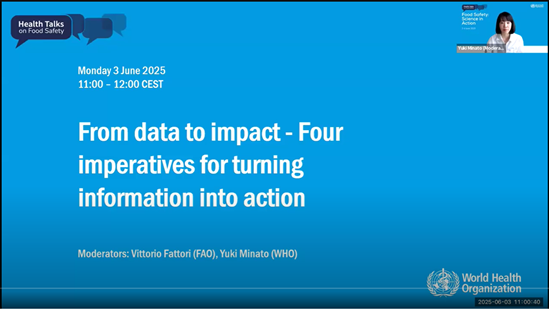Monitoring progress towards global food safety targets
Monitoring progress towards global food safety targets is essential for reducing the burden of foodborne diseases. These efforts also ensure that national food control systems remain effective and continuously improve over time. Once these systems are established, it is crucial to verify that they are correctly implemented and working well. Clear objectives should be set and expected outcomes identified and the system should be able to adapt to new scientific and technological advancements to keep pace with emerging food safety challenges.
Effective monitoring and evaluation require thorough analysis of results and their comparison to initial aims and objectives. This process helps to identify failures, inefficiencies and issues that may hinder satisfactory outcomes, while also highlighting opportunities for improvements. Based on these evaluations, adjustments to the plan and its implementation may be necessary.
Selecting indicators and setting targets are key aspects of managing food safety programmes. Indicators help gauge progress towards objectives and guide decision-making at all levels. In national food systems, they keep priorities in focus and ensure that the necessary actions are taken to achieve targets. By tracking these indicators, countries can identify gaps, measure the impact of interventions, and make informed adjustments to strengthen their food safety frameworks.
WHO is actively working towards monitoring progress through its Global Strategy for Food Safety 2022-2030 to ensure that all people can consume healthy and safe foods everywhere, supported by a sustainable, people-centered, food safety system and infrastructure.






